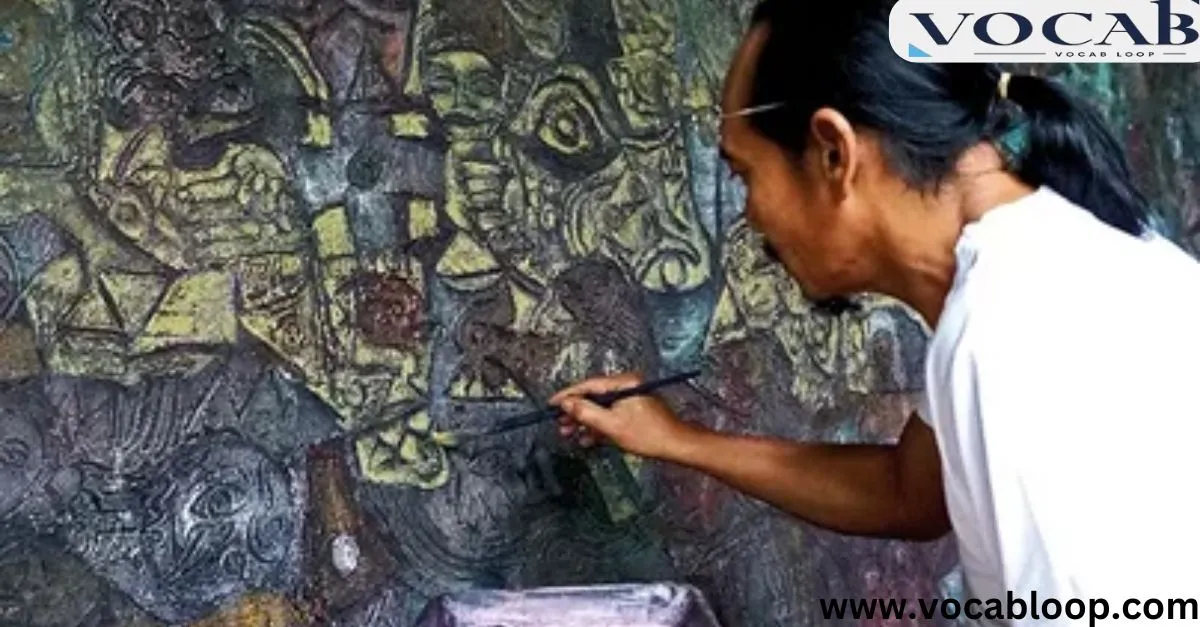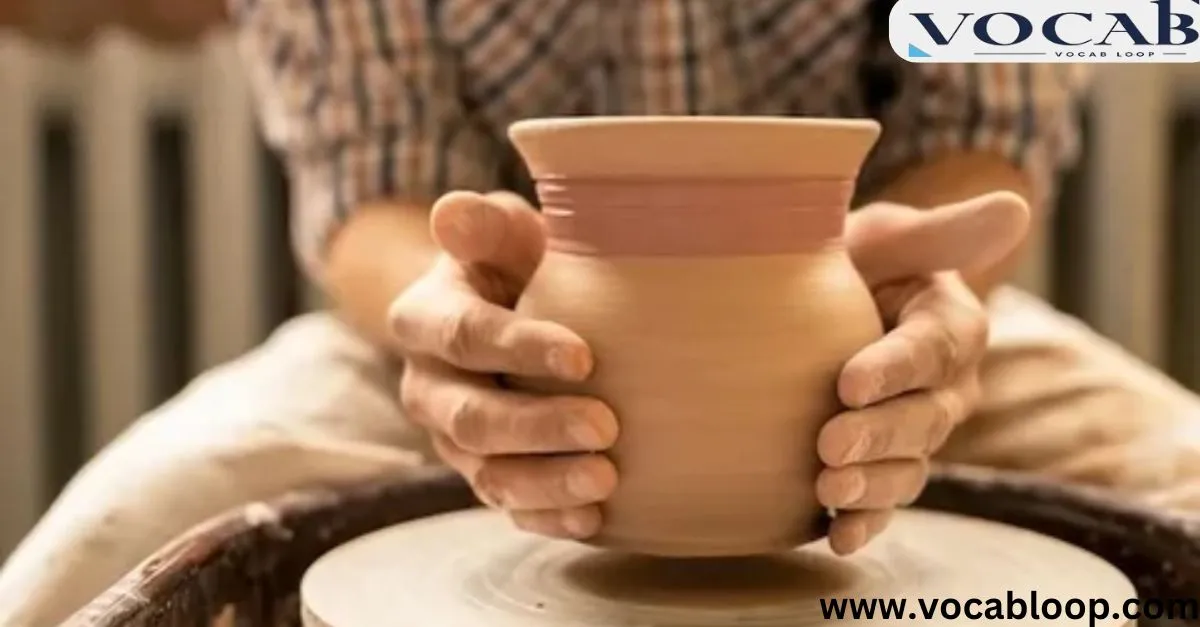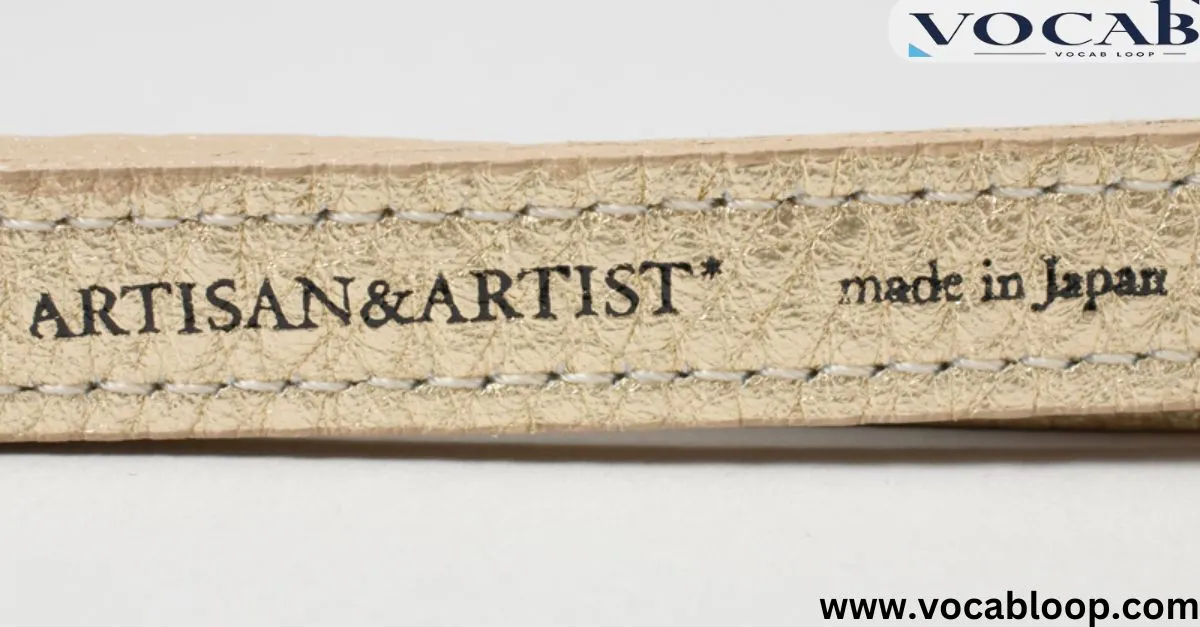The terms artist and artisan are often used interchangeably, but they represent different kinds of creators. While both involve skill and creativity, their approaches, goals, and outputs diverge significantly. For anyone who values art appreciation or admires well-crafted objects.
Understanding this distinction can enrich how we experience creativity and craftsmanship. This guide will break down the unique traits of artists and artisans, covering definitions, meanings, and usage examples to clarify each role and help you recognize the differences.
Who is an Artist?

An artist is someone who uses creative imagination to explore ideas, challenge norms, and express emotions. Artists create works that are often aimed at conveying a concept or evoking a feeling rather than serving a practical function. They are generally known for focusing on originality, often producing pieces that reflect their inner world, thoughts, or perspectives.
Unlike artisans, artists rarely focus on functionality, instead prioritizing expression and innovation in their work. Artists might work in various forms, including painting, sculpture, dance, and more, often pushing boundaries to communicate deeper meanings.
Is the Artist’s Word Correct?
Yes, the term artist is accurate and widely used to describe those engaged in various forms of art. It applies to creators who emphasize design and aesthetics over practical utility. An artist’s work is often symbolic, meant to provoke thought or inspire rather than serve a practical purpose.
This broad usage underscores society’s appreciation for artistic process, originality, and artistry across different mediums, from traditional forms like painting and sculpture to contemporary digital art.
Definition
An artist is defined as an individual who creates for the purpose of self-expression, often producing work that reflects personal or societal themes. Artists are not limited by form, often finding inspiration across a range of media to convey their messages.
Their work may not have a functional purpose, but it plays a vital role in inspiring, provoking thought, and evoking emotions.
Meaning
The meaning behind the term artist centers around the concept of creativity as a form of communication. An artist’s work is often seen as a masterwork or product of inspiration, intended to make audiences feel, think, or see the world from a new perspective.
Unlike artisans who focus on practical objects, artists prioritize abstraction and exploration of ideas.
Who is an Artisan?

An artisan is someone who specializes in skilled craftsmanship to produce items that are functional, yet aesthetically pleasing. Artisans create products intended for practical purposes—objects that are made to be used in daily life while also holding beauty and uniqueness.
Their focus is on functionality and mastery, creating items that meet specific needs, such as furniture, jewelry, pottery, and textiles. This dual focus on practicality and design sets artisans apart, as they combine manual skill with creativity to produce high-quality, functional pieces.
Artisan is the Word Correct?
Yes, artisan is the correct term for those who produce handmade goods with a focus on craftsmanship and quality work. Artisans differ from artists in their attention to practical artistry—their creations are designed for everyday use, often in functional designs that highlight beauty and utility.
The term reflects the hands-on, skill-intensive nature of their work, which is rooted in traditional practices and techniques passed down through generations.
Definition
An artisan is defined as a craftsperson skilled in making goods by hand, often with a focus on functional design and expertise in a particular trade. Artisans create products that are both beautiful and useful, emphasizing craft and durability in items meant for daily use.
Meaning
The meaning of artisan lies in the blend of creativity and utility. Artisans are committed to producing items that serve practical functions while embodying decorative and aesthetic elements.
Their work is less about abstract expression and more about workmanship, ensuring that each item is made with care and quality work that reflects skilled craftsmanship.
Quick Summary
| Aspect | Artist | Artisan |
| Focus | Expression and emotional impact | Practicality and functionality |
| Key Traits | Originality, creativity, exploration | Manual skill, craftsmanship, functionality |
| Products | Paintings, sculptures, performances | Furniture, pottery, jewelry |
| Audience Impact | Challenges perceptions, provokes thought | Provides usable, high-quality products |
Artist and Artisan Parts of Speech
Both artist and artisan function as nouns, describing people who engage in creative or craft-based work. However, they can also appear in adjectival forms.
For example, “artistic” describes work that is inspired or imaginative, while “artisanal” refers to something handcrafted or skillfully made.
Pronunciation of Artist and Artisan
In American English, “artist” is pronounced as /ˈɑːr.tɪst/ and “artisan” as /ˈɑːr.tɪ.zən/. The stress in “artist” falls on the first syllable, while “artisan” has a softer second syllable sound, slightly emphasizing the “t” sound.
Side-by-Side Comparison of Artist and Artisan
| Aspect | Artist | Artisan |
| Focus | Expression and emotional impact | Practicality and functionality |
| Purpose | To evoke emotions, inspire thought, or challenge norms | To create usable, high-quality products |
| Key Traits | Creativity, originality, exploration | Skilled craftsmanship, expertise, durability |
| Primary Output | Paintings, sculptures, performances, abstract works | Furniture, pottery, jewelry, textiles |
| Training | Often self-directed, exploratory | Skill-based, often passed down or formally trained |
| Audience Impact | Engages, provokes, and challenges perceptions | Provides functional and aesthetic value |
| Common Tools | Brushes, canvases, digital tools, musical instruments | Hand tools, materials specific to craft (e.g., clay, leather) |
| Examples | Fine art, modern art, conceptual art | Handcrafted furniture, artisanal foods, jewelry |
| Main Appeal | Symbolism, innovation, emotional resonance | Utility, quality, traditional workmanship |
| Synonyms | Creator, painter, sculptor, designer | Craftsperson, handcrafter, maker, tradesperson |
Which One is More Acceptable: Artist or Artisan?
In casual conversation, both terms are widely accepted, though context matters. “Artist” is commonly used for creators of expressive and visual works, while “artisan” is preferred for those specializing in crafts or handmade items.
In modern markets, however, “artisan” has gained popularity, especially in the food and lifestyle industries where handmade and quality work are valued.
Trick to Remember the Difference Between Artist and Artisan
An easy way to remember the difference is by their focus: artists are focused on expression and innovation, while artisans are focused on practical artistry and skilled craftsmanship. Think of artists as creators of ideas and artisans as creators of practical objects.
Origins of Artist and Artisan
Artist: The word “artist” traces back to the Latin word “artista,” meaning “a master of arts.” It later evolved to include those involved in any expressive or creative work, emphasizing the aspect of creation without practical restrictions.
Artisan: The term “artisan” originates from the Italian word “artigiano,” which referred to tradespeople skilled in specific crafts. Historically, artisans were essential to daily life, producing everything from furniture to clothing by hand.
Synonyms of Artist and Artisan
Artist:
- Creator
- Painter
- Sculptor
- Designer
- Illustrator
- Craftsman
- Visual artist
- Art creator
- Performer
- Master of arts
Artisan:
- Craftsperson
- Maker
- Handcrafter
- Tradesperson
- Craftsman
- Woodworker
- Metalworker
- Pottery maker
- Jeweler
- Fabricator
Everyday Usage Examples

Artist:
- The artist spent hours perfecting each brushstroke.
- As an artist, she often explores deep themes in her work.
- This artist is known for pushing boundaries.
- I love how the artist captures light in his paintings.
- She is a well-known artist in her community.
- The artist created a mural that inspires passersby.
- Art collectors are drawn to this artist’s unique style.
- Many people admire the artist’s abstract approach.
- An artist often sees the world differently.
- His work as an artist makes him fulfilled.
Artisan:
- The artisan crafted each piece by hand.
- These artisan chocolates are a local favorite.
- An artisan can bring beauty to everyday objects.
- She is an artisan who specializes in pottery.
- The artisan uses only natural materials.
- Artisan goods often have a personal touch.
- This artisan is known for quality craftsmanship.
- Local markets feature many artisan products.
- Many appreciate the artisan’s dedication to tradition.
- Artisan furniture is valued for its durability.
FAQs
What is the main difference between an artist and an artisan?
An artist focuses on expression and innovation, while an artisan emphasizes practicality and craftsmanship.
Can someone be both an artist and an artisan?
Yes, many creators combine both roles, producing both expressive art and functional crafts.
Why are artisan goods often more expensive?
Artisan goods are handmade, require skilled labor, and use high-quality materials, making them more costly.
Are all artisans considered artists?
Not all artisans are considered artists, as artisans primarily create functional pieces while artists focus on emotional expression.
Is an artist’s work always abstract?
Not necessarily—though artists often explore abstract concepts, some create realistic or representational works as well.
Conclusion
Artists and Artisans are distinct in their focus, purpose, and approach. Artists create primarily for expression and innovation, aiming to communicate ideas or evoke emotions, while artisans focus on practical purposes and skilled craftsmanship, producing functional design and high-quality, usable items.
Both roles add value to society, but in different ways—artists push us to think, while artisans make our lives richer with handmade and unique items. Understanding these distinctions deepens our appreciation for both creativity and craftsmanship.

Alex Hormozi is a seasoned blogger at Vocab Loop, known for his deep insights into language, vocabulary, and grammar. With years of experience in writing, Alex shares practical tips and effective strategies to help readers improve their linguistic skills and enhance their writing abilities.

